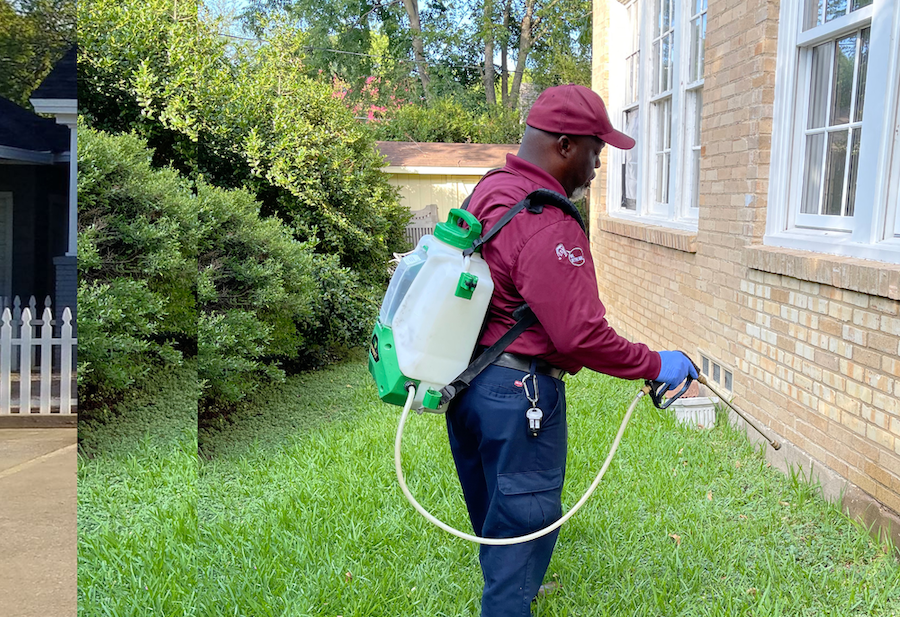A1 Bed Bug Exterminator Charlotte - Effective and Affordable Services
A1 Bed Bug Exterminator Charlotte - Effective and Affordable Services
Blog Article
Bed Bug Therapy Breakdown: Comparing Chemical Vs. Non-Chemical Solutions
In the realm of pest control, specifically when taking care of the persistent concern of bed pests, the choice in between chemical and non-chemical therapy solutions can be an essential one. Both methods supply distinctive benefits and drawbacks, influencing elements such as performance, safety considerations, and overall price. By examining the nuanced details of each method, a clearer understanding of which course to seek in addressing a bed bug invasion can be achieved.
Efficiency of Chemical Treatments
Chemical therapies for bed bug infestations have actually been extensively identified for their powerful and rapid efficacy in eradicating these pests. When taking into consideration the efficiency of chemical treatments, it is vital to comprehend that they can provide a fast and comprehensive remedy to a bed insect problem.
In addition, chemical therapies have the advantage of providing residual impacts, implying that they can remain to remove bed insects even after the preliminary application. This recurring activity is specifically useful in combating any kind of potential re-infestations. In addition, the rapid action of chemical therapies can bring alleviation to individuals dealing with extreme bed bug invasions, enabling them to restore control of their living rooms quickly.
Security Interest In Chemical Solutions
One important facet that needs careful factor to consider when using chemical services for bed pest treatment is guaranteeing the safety and security of passengers and the atmosphere. Exposure to particular chemicals used in bed insect treatments can lead to respiratory concerns, skin inflammation, or various other adverse responses, specifically in individuals with pre-existing problems or sensitivities.
Furthermore, the ecological influence of chemical services is an additional substantial factor to consider. Some pesticides made use of in bed pest treatments may be damaging to advantageous pests, wildlife, and ecological communities if they leach right into the soil or water supply. It is important to make use of chemical therapies deliberately, complying with safety standards, and taking into consideration less harmful alternatives to reduce these risks and ensure the risk-free and effective management of bed bug problems.
Advantages of Non-Chemical Approaches
Thinking about the prospective safety and security worries and ecological impact connected with chemical solutions for bed pest therapy, discovering non-chemical strategies presents an encouraging choice with numerous distinctive advantages. Non-chemical treatments are eco friendly, as they do not contribute to air or water air pollution, making them a sustainable selection for parasite control.
In addition, non-chemical remedies can be effective in targeting bed pests, consisting of hard-to-reach locations where chemical treatments might not pass through. Techniques such as warmth therapy, vacuuming, vapor cleaning, and mattress coverings give extensive elimination without making use of unsafe chemicals. Furthermore, non-chemical approaches can be less disruptive, requiring minimal preparation and permitting for quicker reentry right into dealt with locations. In general, choosing non-chemical bed insect treatment approaches not only prioritizes safety and security and ecological defense yet also makes sure thorough and efficient bug control.
Limitations of Non-Chemical Treatments

Furthermore, non-chemical therapies often call for several applications to attain successful eradication. This can be lengthy and might not constantly ensure complete elimination of all bed bugs and their eggs, especially in hidden or hard-to-reach areas.
Additionally, the success of non-chemical treatments greatly relies upon appropriate execution and thoroughness, which can be challenging for individuals without expert proficiency. Insufficient application of non-chemical approaches might result in incomplete eradication, leading to persistent invasions and the requirement for added treatments.
As a result, while non-chemical therapies have their benefits, it is important to acknowledge these limitations and consider them when figuring out the most efficient method for taking care of bed insect infestations.
Cost Contrast: Chemical Vs. Non-Chemical Options
Offered the constraints connected with non-chemical why do pests need to be controlled therapies, a necessary facet to assess in the context of bed pest management is the price contrast between chemical and non-chemical alternatives. Chemical therapies commonly entail the application of insecticides by experts, which can vary from $250 to $900 per space, depending on the extent of the invasion and the size of the location to be dealt with. In comparison, non-chemical treatments like heat therapy or steam can be extra costly, with costs varying from $1,000 to $6,000 for an entire home. While the initial price of chemical therapies may appear reduced, multiple therapies may be called for to completely eliminate the infestation, possibly increasing the total cost. On the other hand, non-chemical alternatives may offer a much more green and sustainable solution, although they can be cost-prohibitive for some people. Ultimately, when considering the cost of bed insect treatment options, it is crucial to consider look at this web-site the upfront expenses against the efficiency and lasting sustainability of the picked approach.
Verdict

Considering the possible security concerns and ecological impact linked with chemical solutions for bed pest treatment, discovering non-chemical techniques presents an appealing option with a number of distinctive benefits.Offered the limitations connected with non-chemical treatments, a crucial element to evaluate in the context of bed pest management is the expense contrast between chemical and non-chemical options. In contrast, non-chemical treatments like warm treatment or vapor can be extra expensive, with costs varying from $1,000 to $6,000 for an entire home. While the preliminary cost of chemical treatments might seem reduced, several treatments may be called for to fully eliminate the infestation, possibly enhancing the overall price.In conclusion, when contrasting chemical and non-chemical bed bug treatment options, it is crucial to think about effectiveness, safety, benefits, limitations, and cost.
Report this page